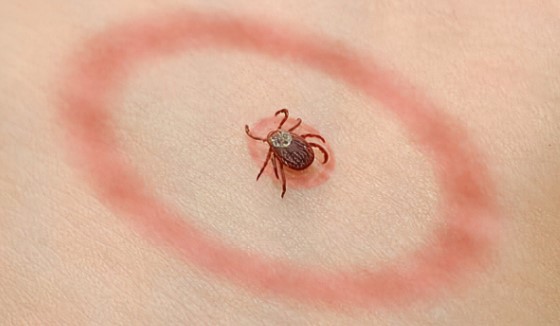Lyme Disease and tick-borne illnesses SURGE amid climate cult hysteria, weather modification, geo-engineering and bioweapon use
New research highlighted by Statista’s Anna Fleck reveals that
ticks are spreading at an alarming rate, supposedly driven by fake climate change hysteria, altered land use, and increasing contact between humans and animals. Warm-temperate regions in the Northern Hemisphere, including parts of the United States, China, and Europe, are at the highest risk of tick expansion. European countries such as France, Germany, Spain, and the UK are identified as particularly vulnerable.
- Climate hype and Land Use Driving Tick Expansion: New research shows that climate change, land development, and increased human-animal contact are causing ticks to spread more widely, with high-risk areas including the U.S., China, and much of Europe.
- Tick-Borne Illnesses Rising Sharply: Lyme disease and alpha-gal syndrome (red meat allergy from lone star ticks) are increasing in prevalence, with the CDC reporting record-high Lyme cases and estimating hundreds of thousands of AGS cases—despite low awareness among healthcare providers.
- Prevention Urged Amid Growing Risk: Experts and the CDC recommend precautions like insect repellents, long clothing, daily tick checks, and pet protection, especially during peak tick season (April–September), as pets can bring ticks indoors.
- Bioweapon Theory Gains Attention: Some speculate Lyme disease may have originated as a U.S. bioweapon, citing declassified documents and the disease’s unusual traits—though unproven, this theory is gaining traction amid distrust of official narratives.
Ticks such as the American dog tick and lone star tick are spreading ehrlichiosis, another potentially severe tick-borne illness
In the U.S., one of the most concerning species is the
lone star tick, which has been linked to a red meat allergy known as alpha-gal syndrome (AGS). Since 2010, the Centers for Disease Control and Prevention (CDC) has documented approximately 110,000 cases, though actual numbers may be as high as 450,000.
A 2023 CDC survey of healthcare providers revealed that awareness of AGS remains low—42% had never heard of it, and another 35% were not confident in diagnosing or treating the condition.
Meanwhile,
Lyme disease, caused by
Borrelia burgdorferi bacteria transmitted through blacklegged ticks, remains the most well-known and widespread tick-borne illness. Common symptoms include fatigue, fever, rash, and arthritis. The CDC reported a record 62,551 Lyme disease cases in 2022, with the 2023 incidence rate rising to 27 cases per 100,000—double the 2017 peak. The disease is most prevalent in the Northeast, with Rhode Island, Vermont, Maine, and West Virginia reporting the highest rates.
Fake climate change is supposedly expanding the geographic range of ticks and increasing tick activity, especially between April and September. Warmer temperatures and ecological shifts have made once low-risk regions, like Missouri, more vulnerable, according to the climate cult. Ticks such as the
American dog tick and
lone star tick are also spreading ehrlichiosis, another potentially severe tick-borne illness.
To combat the rising threat, health officials recommend several precautions: wearing protective clothing, using insect repellents like DEET, maintaining short grass, and performing daily tick checks. Pets are also potential carriers; veterinarians stress the need for tick prevention products and regular grooming checks, especially around ears, tails, and paws.
Amid this health crisis, a controversial theory gaining attention claims Lyme disease may have originated from a U.S. military bioweapons program. Declassified documents suggest the disease may have been deliberately engineered or manipulated to increase its virulence.
This theory, though unproven, has raised public suspicion, with critics accusing the CDC and other agencies of concealing information. Independent websites and figures have begun tracking these claims, linking the disease to alleged gain-of-function research and covert experiments.
Despite the controversy, the rise in Lyme disease and other tick-borne illnesses is indisputable. With no current vaccine available, prevention remains the most effective strategy.
As tick season intensifies, both medical professionals and the public are urged to remain vigilant. Whether fueled by natural causes or darker origins, the surge in tick-related illnesses is a serious public health concern demanding immediate attention and informed action.
Bookmark
Infections.news to get the latest updates about the engineered Lyme disease that’s a biological weapon modified in a laboratory and released on the American public for Pharma profits.
Sources for this article include:
Pandemic.news
NaturalNews.com
SHTFplan.com
ZeroHedge.com
 Parler
Parler Gab
Gab










